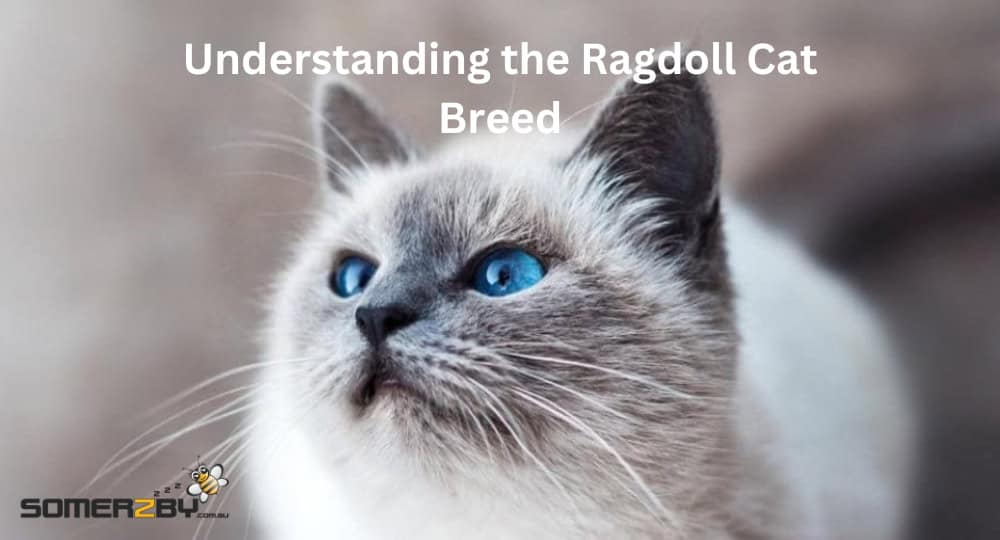Cats, How To, Info Guides
A Complete Guide: Understanding the Ragdoll Cat Breed
If you are looking to bring a new cat home, the ragdoll cat breed will undoubtedly catch your eye. With their fluffy coats, piercing blue eyes and sweet personalities, they truly stand out.
We’ve been selling cat enclosures for over 10 years now and I’ve picked up quite a bit of knowledge about the ragdoll cat breed over the years—everything from their background and character to grooming techniques and health care tips. So let’s jump into it!
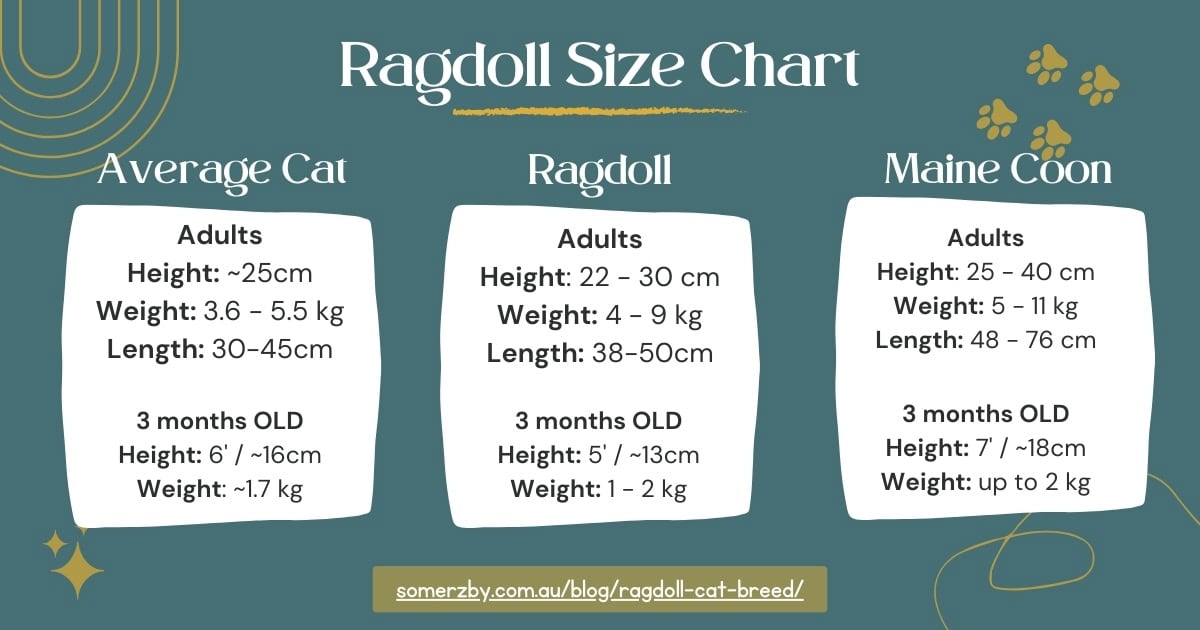
What Is a Ragdoll Cat Breed?
For those looking to add a lovely companion to their home, the Ragdoll cat breed is the perfect choice.
Their mesmerizing blue eyes and ultra-soft coat make them stand out in any crowd. Known for their affectionate and gentle nature, it’s easy to see why they’re beloved by so many families.
History and Origin
The ragdoll cat breed has an interesting history that dates back to the 1960s.
Ann Baker, a breeder living in California, created the first ragdoll. She bred Josephine—a white domestic longhaired feline—with a Birman-like male.
Baker chose Josephine because of her gentle personality. The new breed was named for their tendency to go limp and relaxed when picked up, similar to a ragdoll toy.
The Cat Fanciers’ Association (CFA) began registering ragdolls in 1993, and they’ve been growing in popularity ever since.
Physical Characteristics
Ragdoll cats are a large breed and are known for their impressive size. Males usually tip the scales at 6-9kg, while females weigh in between 4-7kg. Their medium-length coat features a striking colourpoint pattern, with lighter bodies and darker faces, ears, legs and tails.
Ragdoll coat patterns come in six different colours: seal, chocolate, blue, lilac, red, and cream, and three different coat patterns: colourpoint, mitted, and bicolour. Their medium-length, silky coat is often compared to rabbit fur and doesn’t mat easily, making grooming a breeze.
Growth and Size
Ragdoll kittens grow steadily and reach their full size more slowly compared to other cat breeds. At birth, they typically weigh around 85-115 grams and are small and fragile. By six months, they can weigh between 2-3.5kg, but it can take up to 3-4 years for them to reach their full adult size.
Adult male Ragdolls typically weigh between 6.5-9kg, while females are slightly smaller, weighing 4.5-6.5kg. Ragdolls are one of the largest domestic cat breeds, with a sturdy and muscular build.
Personality Traits
Ragdoll cats have a reputation for being sweet and loving. Many people call them “puppy-like” because they often trail behind their owners and are quick to welcome them at the door. With their laid-back personality, Ragdolls get along wonderfully with kids and other animals.
These large cats are smart and can learn tricks, but they don’t have boundless energy. They enjoy lounging around the house most of the time, making them ideal lap cats.
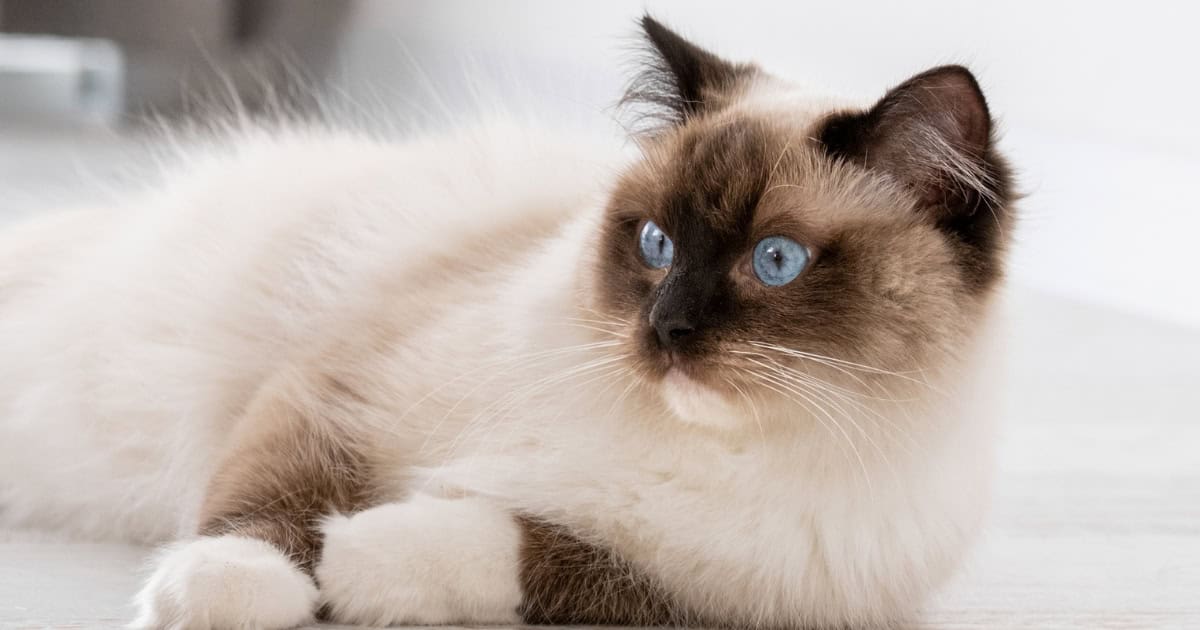
Caring for Your Ragdoll Cat
Ragdoll care isn’t too tricky. Here are a few things you can do to look after your ragdoll cat properly.
Grooming Ragdolls
Despite their coat length, ragdoll cats require minimal grooming compared to other long-haired breeds. Brushing their coat once or twice a week is usually sufficient to avoid tangles and keep their coat looking shiny and healthy.
Ragdolls also require regular nail trims and ear cleaning to maintain their overall health and hygiene. It’s important to start these grooming routines early on so your cat becomes accustomed to them.
Feeding and Nutrition
Ragdoll cats have specific nutritional requirements due to their large size and tendency to gain weight. It’s important to feed them a high-quality, protein-rich cat food that is appropriate for their life stage and activity level.
Some ragdolls may benefit from a prescription diet to prevent or manage health issues such as bladder stones or obesity. Always consult with your veterinarian to determine the best cat food for your individual pet.
Exercise and Playtime
Even though ragdoll cats aren’t the most energetic felines, they still need regular playtime to stay healthy. Using interactive cat toys like laser pointers or puzzle feeders can help keep them mentally sharp and ward off boredom.
Ragdolls love spending time with their humans and can even be taught to fetch or perform tricks. Regular play sessions not only keep them entertained but also help you grow closer.
Regular Vet Check-Ups
Just like the average cat, ragdolls require regular veterinary check-ups to maintain their health and prevent any potential health issues.
It’s recommended to take your ragdoll to the vet at least once a year for a comprehensive health exam, vaccinations and preventive care such as dental cleanings and parasite control.
A visit to the vet isn’t just for check-ups; they can also guide you in managing your cat’s weight through good nutrition and regular exercise. Keeping up with these habits will contribute significantly to a long, happy life for your furry friend.
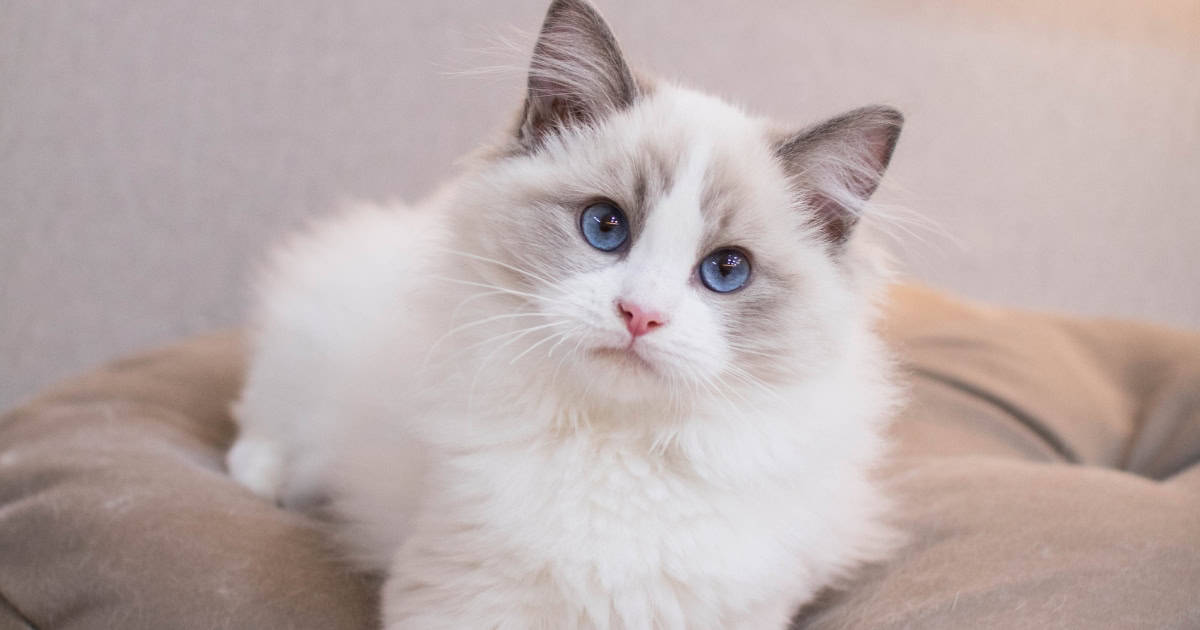
Common Health Issues in Ragdoll Cats
While ragdoll cats are generally healthy, they are prone to certain health issues that pet parents should be aware of. Here are some of the most common health problems seen in ragdoll cats .
Hypertrophic Cardiomyopathy (HCM)
Several cat breed s including ragdolls are affected by HCM, which is an inherited heart disease. The thickening of the heart muscle due to HCM can result in complications like heart failure.
Ragdoll cats with HCM often show symptoms such as quickened breaths, sluggishness and a lack of appetite. While there isn’t a cure yet for this heart disease, identifying it early on and starting treatments can significantly improve their quality of life.
Bladder Stones
Ragdoll cats are prone to developing bladder stones , which are hard mineral deposits that can form in the bladder and cause urinary tract issues. Symptoms may include frequent urination, straining to urinate, blood in the urine and loss of appetite.
Bladder stone treatment usually involves changing the diet, using medication or having surgery to remove the stones. Make sure your ragdoll stays well-hydrated by giving them lots of fresh water and scheduling frequent visits to their veterinarian to catch any issues early on.
Obesity
Ragdoll cats , with their large size and laid-back lifestyle, often face the risk of obesity. This extra weight can cause a host of problems like diabetes, joint pain and breathing difficulties.
Offering healthy cat food in controlled portions along with regular play sessions are key to preventing obesity in your ragdoll cat. Make time for daily activities that encourage movement. For specific feeding guidelines tailored to their age, weight, and lifestyle, consult your veterinarian.
Dental Problems
Just like other cats, ragdolls can face dental issues such as tooth decay, gum disease, and oral infections. Regularly scheduled check-ups and cleanings at the vet can help prevent these problems and maintain your ragdoll’s healthy smile.
Brushing your ragdoll’s teeth at home with a cat-specific toothpaste can also help maintain their oral health between vet visits.
If you notice any signs of dental problems, such as bad breath or difficulty eating, schedule an appointment with your veterinarian right away.
Toni’s Fun Facts:
Ragdolls are known for their tendency to go limp and relaxed when picked up, similar to a ragdoll toy – hence their name. This trait is thought to be related to a unique genetic mutation that affects their collagen.
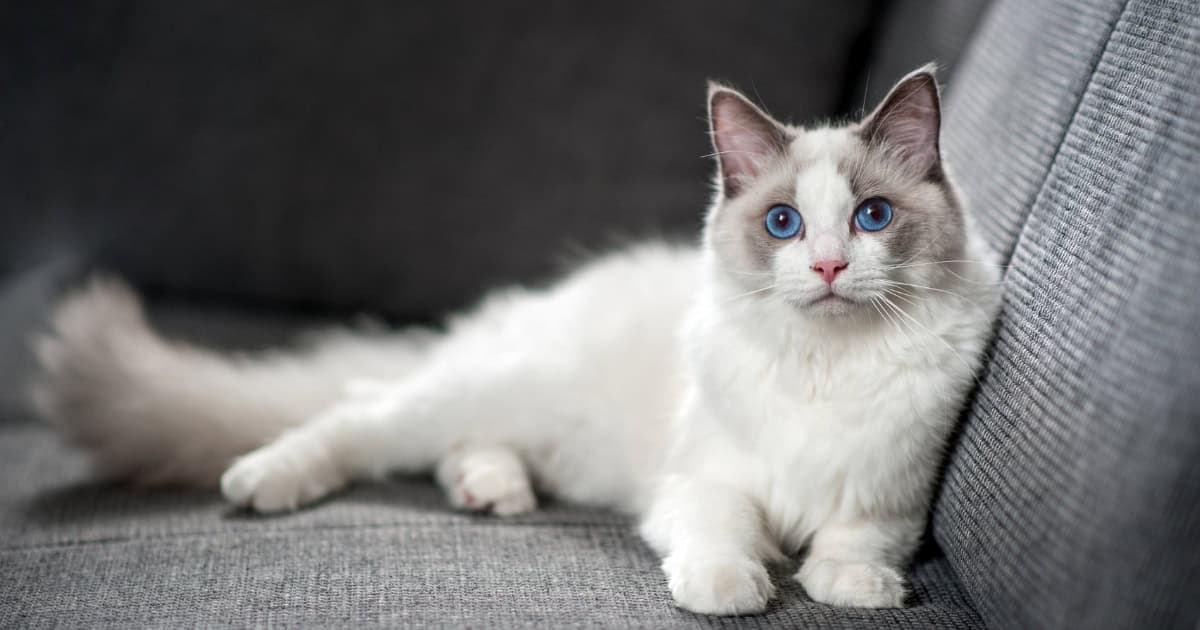
Why Ragdoll Cats Make Excellent Family Pets
Searching for a friendly pet to join your family? Consider the ragdoll cat breed . These lovable felines are famous for their easygoing personalities and ability to adapt well to different homes.
Gentle and Affectionate Nature
If you’re looking for an affectionate cat that sticks by your side, Ragdolls might be just what you need. These “puppy-like” felines enjoy trailing after their humans around the house and soaking up all the cuddles they can get. Their fondness for being close makes them great lap cats.
From my experience, ragdolls are fantastic with kids. They love both playtime and cuddling, showing a lot of patience and tolerance. Even in noisy or bustling homes filled with sudden movements, they stay calm and unbothered.
Adaptability to Various Households
Whether you live in a tiny studio or a big house, ragdolls fit right in. They don’t need much room to run around and play, making them perfect for living indoors.
Ragdolls are pretty quiet cats and don’t usually meow a lot. This trait makes them perfect for people living in apartments or anyone who enjoys a quieter home.
Ragdolls are considered hypoallergenic however many people with cat allergies report that they still have reactions to them.
Good with Children and Other Pets
Thanks to their gentle and easy-going nature, ragdolls typically are a good fit with children and other pets, especially when introduced at a young age and socialised properly. They’re great family cats that enjoy playtime, but they’re not overly active or demanding.
If you have a home filled with different pets, ragdolls can be an excellent choice. These friendly pets are known for their calm demeanor which allows them to blend right in and build strong connections both with people and furry companions alike.
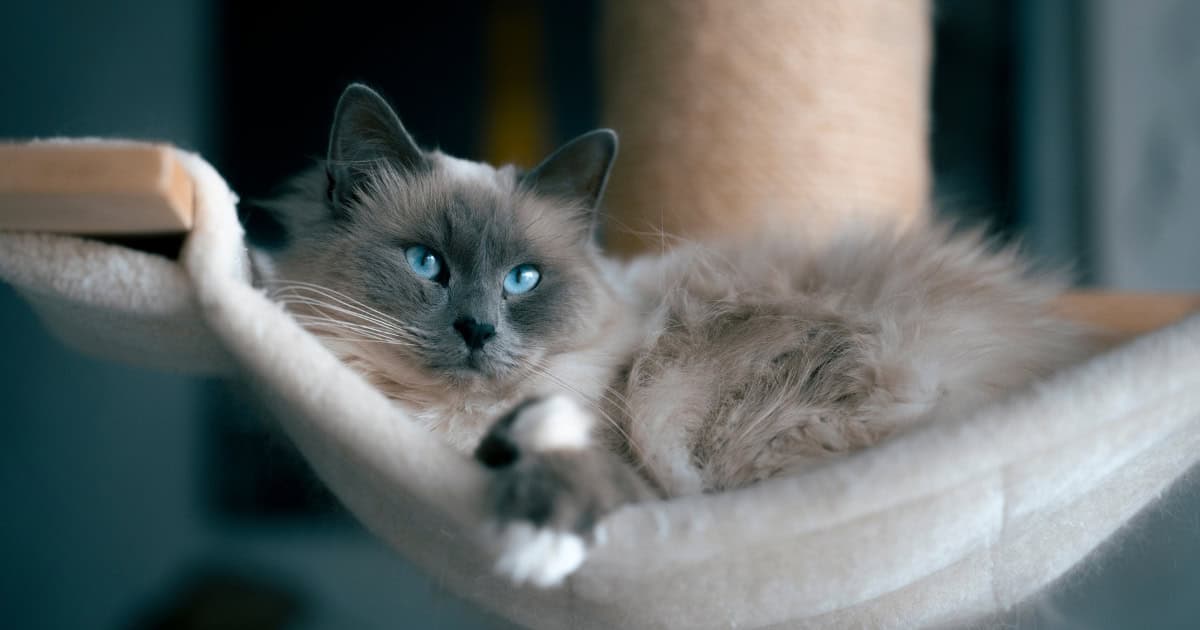
Adopting or Buying a Ragdoll Cat
Choosing a ragdoll cat for your family means you can either adopt from a rescue group or buy from a trusted breeder. Each option has its own perks, so think about which fits best with what you’re looking for and your current situation.
Choosing a Reputable Breeder
If you have your heart set on a purebred ragdoll kitten, it’s crucial to choose a reputable breeder who prioritises the health and well-being of their cats. Look for a breeder registered with a recognised cat breed association.
A good breeder will share health certificates and genetic test results for their kittens, making sure you bring home a healthy, well-adjusted pet. They’re also eager to answer any questions and give tips on how to care for your new ragdoll.
Ragdoll cat cost can vary but is usually between $1,000-2,500 in Australia.
Adopting from a Rescue Organisation
Bringing an adult cat home from a ragdoll rescue group can be incredibly fulfilling. You’re offering a cat another shot at happiness and stability. These rescues take in cats that have been left behind or given up, aiming to match them with permanent homes.
If you adopt an older cat, you’ll likely find they’re already desexed, up-to-date on vaccinations, and know how to use a litter box—saving you hassle and expense compared to getting a kitten.
Preparing Your Home for a New Ragdoll
Getting ready for your new ragdoll kitten? Start by making sure your home is safe and comfy. Set up an outdoor cat enclosure, clear out toxic plants or harmful chemicals, and place a litter box along with scratching posts in a quiet spot that’s easy for them to find.
Make sure you have the basics like food and water bowls, a comfy cat bed, and lots of interactive cat toys to keep your ragdoll happy and mentally stimulated. A bit of planning goes a long way in making your new furry friend feel right at home.
Toni’s Fun Facts:
All ragdoll kittens are born completely white due to their colourpoint coat pattern. As they grow, their distinctive markings and colours develop, with their full coat colour and pattern emerging by 2-3 years of age.
Toni’s Wrap
Well, there you have it – everything I’ve discovered about the ragdoll cat breed . These fluffy felines have stolen my heart with their affectionate nature and goofy antics.
With their mesmerising blue eyes and plush coats, these cats bring both beauty and affection into any home. The ragdoll makes a wonderful addition to any home, including those with children and other pets.
Proper care, including grooming and regular vet check-ups, ensures their health and longevity. Whether adopted from a rescue or purchased from a reputable breeder, Ragdolls enrich lives with their calm presence and unwavering loyalty.
Prepare your home thoughtfully, and enjoy the endless cuddles and quiet companionship these wonderful cats offer.




